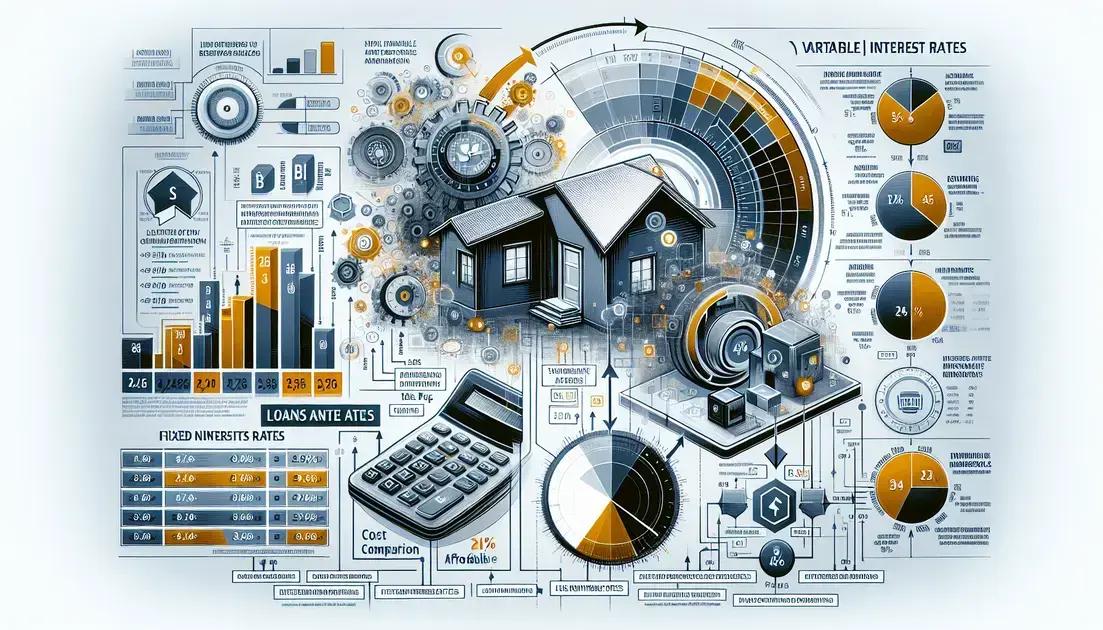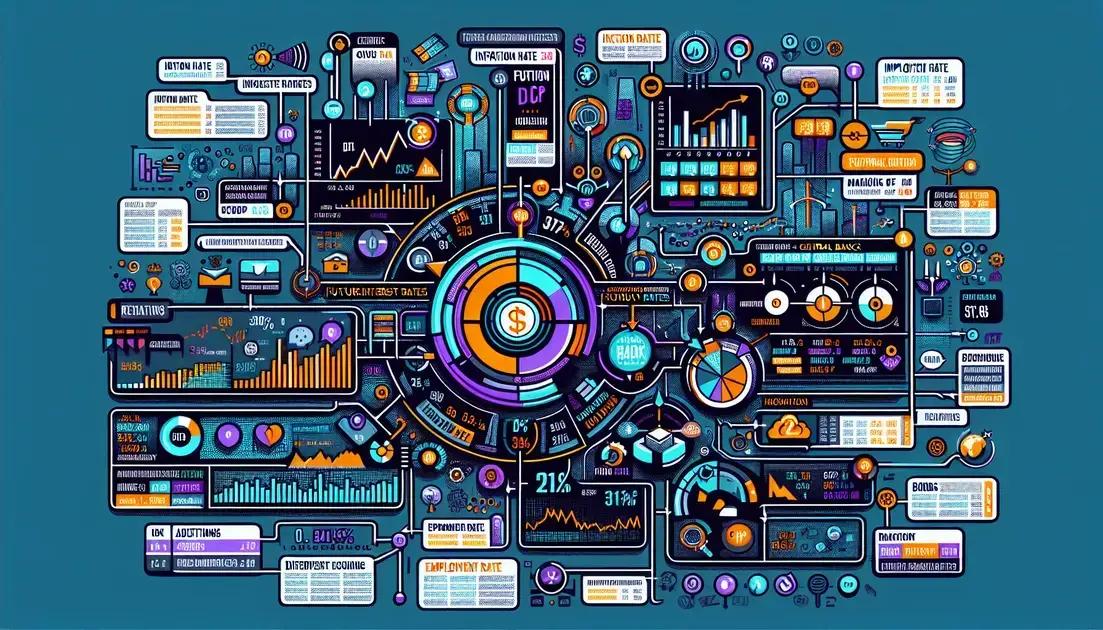What You Need to Know About Their Impact on Your Finances
Advertising
Understanding interest rates is crucial for making informed financial decisions. This guide explores their significance and how they influence everything from loans to savings. In today’s economy, being aware of interest rate fluctuations can help you manage your finances effectively.
What Are Interest Rates and How Do They Work?
Interest rates are essentially the cost of borrowing money or the reward for saving it. They are expressed as a percentage and can either be fixed or variable. A fixed interest rate remains constant throughout the loan period, while a variable interest rate can change over time based on market conditions.
How Are Interest Rates Determined?
Interest rates are influenced by various factors, including economic conditions, inflation, and monetary policy. The central bank plays a key role in setting the benchmark rates that influence how much banks charge for loans. These rates fluctuate based on the overall economic environment.
The Role of Inflation
Inflation is the rate at which the general level of prices for goods and services is rising. When inflation rises, central banks often increase interest rates to curb spending. This, in turn, helps to stabilize the economy. Low inflation may lead to lower interest rates, encouraging borrowing and spending.
Types of Interest Rates
There are several types of interest rates that individuals and businesses encounter. Short-term rates typically apply to loans with a duration of less than a year, such as personal loans or credit cards. Long-term rates are usually associated with mortgages and corporate loans. Understanding these types can help borrowers choose the best financing options.
Additionally, APR (Annual Percentage Rate) is important to note. It represents the annual cost of borrowing, including fees and other costs, expressed as a percentage. This helps consumers make better comparisons between different loan options.
The Impact of Interest Rates on Loans and Mortgages

The influence of interest rates on loans and mortgages is significant. When rates rise, borrowing money becomes more expensive. This can deter people from applying for loans or mortgages because their monthly payments will be higher. For example, a small increase in interest rates can lead to a considerable increase in the total interest paid over the life of a mortgage.
Fixed vs. Variable Interest Rates
Loans can come with either fixed or variable interest rates. Fixed rates remain unchanged throughout the life of the loan, providing stability and predictability. On the other hand, variable rates can fluctuate based on economic conditions—meaning monthly payments may increase or decrease, leading to uncertainty for borrowers.
Impact on Mortgage Affordability
As interest rates increase, the affordability of mortgages decreases. Borrowers may find that their desired home is now out of their financial reach due to larger monthly payments. This can lead to decreased demand for homes, impacting the housing market overall.
The Cost of Borrowing
Higher interest rates mean a higher cost of borrowing. For example, if you take out a loan of $200,000 to buy a home with a 3% interest rate, your monthly payment is lower than if you took the same loan with a 5% interest rate. Over the entire loan term, this difference can amount to thousands of dollars.
Understanding how interest rates affect your loans and mortgages is key to making informed financial decisions. It’s essential to monitor current rates and consider how changes might impact future borrowing.
How Interest Rates Affect Savings and Investments
Interest rates play a crucial role in how savings and investments perform. When interest rates increase, savers typically earn more from their savings accounts and fixed deposits. This encourages individuals to save more, as the return on their savings becomes more attractive.
The Relationship Between Interest Rates and Savings
When central banks raise interest rates, financial institutions also raise their savings rates. This is beneficial for consumers with savings accounts, as they see an uptick in their earnings. Conversely, when interest rates fall, savings accounts yield lower returns, which can discourage saving and may lead individuals to seek more lucrative investment opportunities.
Impact on Investment Decisions
Higher interest rates can lead to changes in investment strategies. Investors seeking higher returns may move away from low-yielding savings and look toward stocks or real estate. As borrowing becomes more expensive, companies may cut back on expansion plans, which can also affect stock prices.
Understanding Opportunity Cost
The concept of opportunity cost is essential when considering investments and savings. When interest rates are high, the opportunity cost of investing in low-yield options increases. Individuals and businesses may prefer to keep their money in savings to earn the higher interest rather than invest in riskier assets.
Moreover, it’s essential to evaluate how interest rates affect debt investment returns. Bonds issued will have different yields based on current interest rates, reflecting their real value to investors. This highlights the interconnectedness of interest rates with both portfolio management and personal finance decisions.
Predictions for Future Interest Rates Trends

Predictions for future interest rates trends are influenced by numerous factors, including economic growth, inflation rates, and central bank policies. As economies recover or grow, demand for credit often increases, which can lead to higher interest rates.
The Role of Central Banks
Central banks play a significant role in interest rate predictions. They adjust rates to either stimulate or cool down the economy. For example, if inflation exceeds the target level, central banks might increase rates to control spending and stabilize prices.
Economic Indicators
Key economic indicators, such as employment rates and consumer spending, also provide insight into future interest rate directions. A strong job market and increased consumer confidence typically signal the potential for rising interest rates, while economic uncertainty can lead to lower rates to encourage borrowing.
Market Reactions
The bond market also reflects expectations for future interest rates. When bond prices fall, it often indicates that investors expect rates to rise; conversely, rising bond prices suggest expectations for lower interest rates. Observing these market reactions can give clues on where rates might head.
With ongoing global events, including changes in trade policies and geopolitical tensions, interest rate trends will continue to be dynamic. Staying informed and monitoring updates can help individuals and businesses prepare for any changes in the financial landscape.
Understanding Interest Rates: A Key to Financial Wellness
Understanding interest rates is vital for making smart financial decisions. From loans and mortgages to savings and investments, interest rates significantly affect your financial landscape.
By staying informed about how interest rates work and their implications, individuals can navigate their finances more effectively. Monitoring trends and adjustments by central banks can also provide valuable insight into future financial strategies.
By making well-informed decisions based on interest rate conditions, you can enhance your financial stability and achieve your financial goals.




